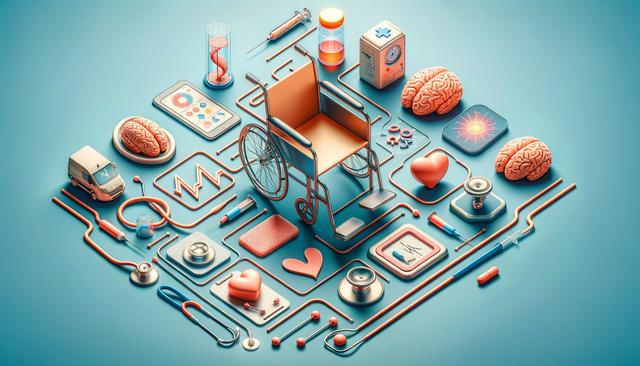Understanding Stroke and Its Impact
A stroke occurs when the blood supply to part of the brain is interrupted or reduced, preventing brain tissue from getting oxygen and nutrients. This can lead to brain cell death and result in physical, cognitive, and emotional impairments. The effects of a stroke vary depending on the area of the brain affected and the severity of the event. Common consequences include muscle weakness, difficulty speaking, memory loss, and emotional challenges such as depression or anxiety. Early intervention is vital, and stroke therapy is essential for maximizing recovery potential. Through a combination of medical treatment and rehabilitation, patients can often regain significant function and improve their daily life.
Core Components of Stroke Therapy
Stroke therapy encompasses various approaches, each tailored to the individual’s specific needs. Rehabilitation typically begins in the hospital and may continue in a specialized facility or at home. The core components of stroke therapy often include:
- Physical therapy: Helps restore movement and coordination through exercises that build strength and flexibility.
- Occupational therapy: Focuses on improving the ability to perform daily activities such as dressing, eating, and bathing.
- Speech and language therapy: Assists individuals who experience difficulties with speaking, understanding language, or swallowing.
- Neuropsychological therapy: Addresses cognitive and emotional changes resulting from the stroke.
Each therapy type is integrated into a comprehensive plan that evolves as the patient progresses. Active involvement from both the individual and caregivers supports better outcomes and encourages consistency in the recovery process.
Innovative Rehabilitation Techniques
In recent years, stroke therapy has advanced with new technologies and treatment approaches that enhance traditional rehabilitation. These innovations can provide additional support and motivation for individuals undergoing recovery. Some commonly used methods include:
- Robotic-assisted therapy: Utilizes machines to guide limb movement and improve motor function with precision and consistency.
- Virtual reality (VR): Offers immersive environments that simulate real-life tasks and promote engagement during therapy sessions.
- Constraint-induced movement therapy (CIMT): Encourages use of the affected limb by restraining the unaffected one, promoting neural adaptation.
- Functional electrical stimulation (FES): Applies controlled electrical pulses to stimulate muscle contractions and improve motor control.
These approaches are often used alongside conventional therapies, and while not suitable for every patient, they represent promising avenues for enhancing recovery outcomes when appropriately applied by trained professionals.
The Role of Support Systems in Recovery
Stroke recovery is not solely a medical journey—it is also deeply personal and influenced by emotional and social factors. Support systems play a crucial role in helping individuals adapt to life after a stroke. Family members, caregivers, and friends offer emotional encouragement and practical assistance that reinforces therapeutic goals. Additionally, support groups and community resources provide spaces where individuals can share experiences, exchange advice, and build confidence.
Effective support systems often include:
- Encouraging participation in therapy sessions and home exercises
- Assisting with transportation to medical appointments
- Helping manage medications and healthcare coordination
- Providing companionship and emotional reassurance
By involving loved ones in the recovery process, stroke survivors are more likely to feel motivated, less isolated, and better equipped to handle the challenges that may arise during rehabilitation.
Long-Term Considerations and Continued Progress
Stroke therapy does not end when initial rehabilitation concludes. Long-term recovery often requires ongoing attention to physical health, emotional well-being, and lifestyle adjustments. Many individuals continue with outpatient therapy or incorporate self-managed routines to maintain and enhance their progress. Strategies for long-term recovery include:
- Regular physical activity tailored to the individual’s abilities
- Healthy nutrition to support brain and body function
- Cognitive exercises and activities that engage the mind
- Monitoring for signs of depression or other mental health concerns
Healthcare providers may recommend periodic evaluations to adjust therapy plans as needed. Staying proactive and committed to recovery goals significantly contributes to sustained improvement and independence. It is also important to recognize that progress may vary, and patience remains key in navigating the rehabilitation journey.
Conclusion: Supporting a Path to Recovery
Stroke therapy offers a structured, supportive path toward regaining lost skills and improving quality of life after a stroke. By combining medical treatment, rehabilitation strategies, and strong support networks, individuals can make meaningful strides in their recovery. Whether through traditional practices or innovative technologies, the goal remains the same: to help each person reach their highest potential for independence and well-being. With a personalized approach and ongoing commitment, stroke survivors can continue to build resilience and restore function over time.






